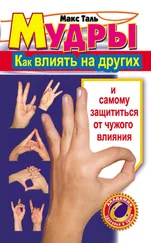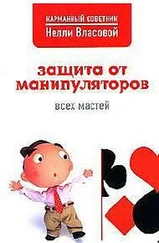Field, T., M. Hernandez-Reif, M. Diego, S. Schanberg, and C. Kuhn. 2005. “Cortisol Decreases and Serotonin and Dopamine Increase Following Massage Therapy.” International Journal of Neuroscience 115(10): 1397–1413.
Fisher, H. E. 2016. “Love Is Like Cocaine.” Nautilus, February 4. http://nautil.us/issue/33/attraction/love-is-like-cocaine.
Fowler, J. S., N. D. Volkow, C. A. Kassed, and L. Chang. 2007. “Imaging the Addicted Human Brain.” Science & Practice Perspectives 3(2): 4–16.
Geraci, L., and S. Rajaram. 2016. “The Illusory Truth Effect: The Distinc-tiveness Effect in Explicit and Implicit Memory.” Distinctiveness and Memory, 210–234.
Glenn, A. L., and A. Raine. 2014. Psychopathy: An introduction to biological findings and their implications . New York: New York University Press.
Gottman, J. M. 1994. Why Marriages Succeed or Fail: And How You Can Make Your Marriage Last. New York: Simon & Schuster.
Goulston, M. 2012. “Rage – Coming Soon from a Narcissist Near You.” Psychology Today, February 9. Accessed February 11, 2019. https://www.psychologytoday.com/us/blog/just-listen/201202/rage-coming-soon-narcissist-near-you.
Greene, R. 2004. The Art of Seduction. Eastbourne, UK: Gardners Books. Grohol, J. 2019. “An Overview of Dialectical Behavior Therapy.”
PsychCentral.com, June 19. Accessed February 9, 2020. https://psychcentral.com/lib/an-overview-of-dialectical-behavior-therapy.
Gudjonsson, G. H., and J. F. Sigurdsson. 2003. “The Relationship of Compliance with Coping Strategies and Self-Esteem.” European Journal of Psychological Assessment 19(2): 117–123.
Handlin, L., M. Petersson, and K. Uvnãs-Moberg. 2015. “Self-Soothing Behaviors with Particular Reference to Oxytocin Release Induced by Non-noxious Sensory Stimulation.” Frontiers in Psychology 5: 1529.
Hasher, L., D. Goldstein, and T. Toppino. 1977. “Frequency and the Conference of Referential Validity.” Journal of Verbal Learning and Verbal Behavior 16(1): 107–112.
Hatfield, E., J. T. Cacioppo, and R. L. Rapson. 2003. Emotional Contagion. Cambridge, UK: Cambridge University Press.
Hay, L. L. 2016. Mirror Work: 21 Days to Heal Your Life. Carlsbad, CA: Hay House.
Herdieckerhoff, E. 2016. “The Gentle Power of Highly Sensitive People.” Speech presented at TEDxIHEParis, Paris, November. https://www.youtube.com/watch?v=pi4JOlMSWjo.
Impett, E. A., A. Kogan, T. English, O. John, C. Oveis, A. M. Gordon, and D. Keltner. 2012. “Suppression Sours Sacrifice.” Personality and Social Psychology Bulletin 38(6): 707–720.
Jagiellowicz, J., X. Xu, A. Aron, E. Aron, G. Cao, T. Feng, and X. Weng. 2011. “The Trait of Sensory Processing Sensitivity and Neural Responses to Changes in Visual Scenes.” Social Cognitive and Affective Neuroscience 6(1): 38–47.
Jiang, H., M. P. White, M. D. Greicius, L. C. Waelde, and D. Spiegel. 2017. “Brain Activity and Functional Connectivity Associated with Hypnosis.” Cerebral Cortex 27(8): 4083–4093.
Kaiser, P., D. Kohen, M. Brown, R. Kajander, and A. Barnes. 2018. “Integrating Pediatric Hypnosis with Complementary Modalities: Clinical Perspectives on Personalized Treatment.” Children 5(8): 108.
Kernberg, O. F. 1984. Severe Personality Disorders: Psychotherapeutic Strategies. New Haven, CT: Yale University Press.
Kim, H., S. M. Schneider, L. Kravitz, C. Mermier, and M. R. Burge. 2013. “Mind-Body Practices for Posttraumatic Stress Disorder.” Journal of Investigative Medicine 61(5): 827–834.
Kimonis, E. R., P. J. Frick, E. Cauffman, A. Goldweber, and J. Skeem. 2012. “Primary and Secondary Variants of Juvenile Psychopathy Differ in Emotional Processing.” Development and Psychopathology, 24 (3): 1091–1103.
Klein, S. 2013. “Adrenaline, Cortisol, Norepinephrine: The Three Major Stress Hormones, Explained.” HuffPost.com, April 19. http://www.huffingtonpost.com/2013/04/19/adrenaline-cortisol-stress-hormones_n_3112800.html.
Korb, A. 2011. “Boosting Your Serotonin Activity.” Psychology Today , November 17. Accessed July 1, 2019. https://www.psychologytoday.com/us/blog/prefrontal-nudity/201111/boosting-your-serotonin-activity.
Kuster, M., S. Backes, V. Brandstätter, F. W. Nussbeck, T. N. Bradbury, D. Sutter-Stickel, and G. Bodenmann. 2017. “Approach-Avoidance Goals and Relationship Problems, Communication of Stress, and Dyadic Coping in Couples.” Motivation and Emotion 41(5): 576–590.
Lange, J., D. L. Paulhus, and J. Crusius. 2017. “Elucidating the Dark Side of Envy: Distinctive links of benign and malicious envy with dark personalities.” Personality and Social Psychology Bulletin , 44(4): 601‒614.
Lazar, S. W., J. Carmody, M. Vangel, C. Congleton, S. M. Yerramsetti, T. Gard, and B. K. Hölzel. 2011. “Mindfulness Practice Leads to Increases in Regional Brain Gray Matter Density.” Psychiatry Research: Neuroimaging 191(1): 36–43.
Linehan, M. M. 2014. DBT Skills Training Manual. New York: Guilford Press. MacDonald, M., and S. Sherry. 2016. “N.S. Research Lays Out How to Recognize Narcissistic Perfectionists.” CTV News, April 22. Accessed February 9, 2020. https://www.ctvnews.ca/lifestyle/n-s-research-lays-out-how-to-recognize-narcissistic-perfectionists-1.2870230.
Marazziti, D., H. S. Akiskal, A. Rossi, and G. B. Cassano. 1999. “Alteration of the Platelet Serotonin Transporter in Romantic Love.” Psychological Medicine 29(3): 741–745.
Marsh, J., and V. Ramachandran. 2012. “Do Mirror Neurons Give Us Empathy?” Greater Good , March 29. Accessed October 12, 2018. https://greatergood.berkeley.edu/article/item/do_mirror_neurons_give_empathy.
Martinez-Lewi, L. 2018. “Are You Married to a Jekyll Hyde Covert Narcissist?” December 5. Accessed June 23, 2019. http://thenarcissistinyourlife.com/are-you-married-to-a-jekyll-hyde-covert-narcissist.
Mayer, F. S., C. M. P. Frantz, E. Bruehlman-Senecal, and K. Doliver. 2009. “Why Is Nature Beneficial? The Role of Connectedness in Nature.” Environment and Behavior 41: 607–643.
McKay, M., J. C. Wood, and J. Brantley. 2010. The Dialectical Behavior Therapy Skills Workbook: Practical DBT Exercises for Learning Mindfulness, Interpersonal Effectiveness, Emotion Regulation & Distress Tolerance. Oakland, CA: New Harbinger Publications.
Mikkelsen, K., L. Stojanovska, and V. Apostolopoulos. 2016. “The Effects of Vitamin B in Depression.” Current Medicinal Chemistry 23(38): 4317–4337.
Mogilski, J. K., and L. L. Welling. 2017. “Staying Friends with an Ex: Sex and Dark Personality Traits Predict Motivations for Post-Relationship Friendship.” Personality and Individual Differences 115: 114–119.
Morey, A., A. L. Gold, K. S. Labar, S. K. Beall, V. M. Brown, C. C. Haswell, J. D. Nasser et al. 2012. “Amygdala Volume Changes in Posttraumatic Stress Disorder in a Large Case-Controlled Veterans Group.” Archives of General Psychiatry 69(11): 1169.
Motzkin, J. C., J. P. Newman, K. A. Kiehl, and M. Koenigs. 2011. “Reduced Prefrontal Connectivity in Psychopathy.” Journal of Neuroscience 31(48): 17348–17357.
National Domestic Violence Hotline. 2018. “Why We Don’t Recommend Couples Counseling for Abusive Relationships.” February 18. Accessed October 9, 2018. https://www.thehotline.org/2014/08/01/why-we-dont-recommend-couples-counseling-for-abusive-relationships.
Navarro, J. 2017. Dangerous Personalities: An FBI Profiler Shows How to Identify and Protect Yourself from Harmful People. Emmaus, PA: Rodale.
Neff, K. 2011. “The Chemicals of Care: How Self-Compassion Manifests in Our Bodies.” HuffPost.com, August 27. Accessed February 8, 2020. https://www.huffpost.com/entry/self-compassion_b_884665.
Читать дальше
Конец ознакомительного отрывка
Купить книгу











